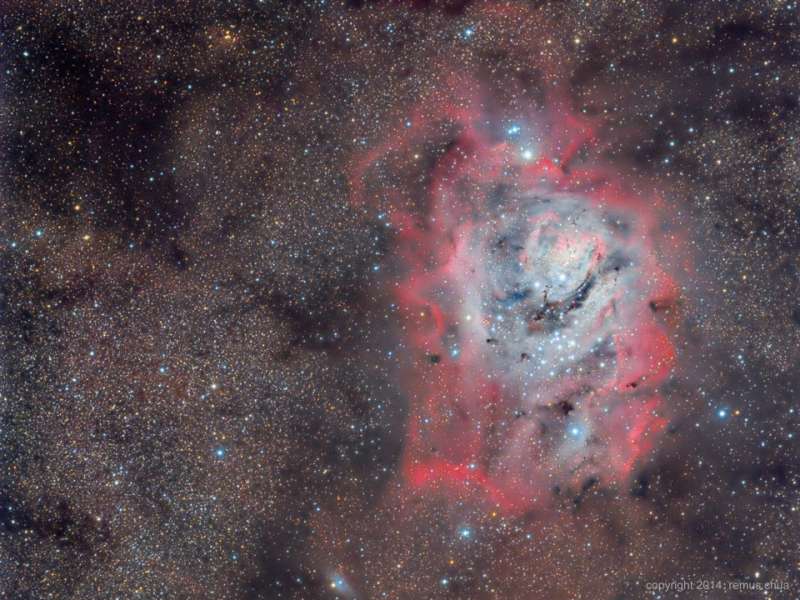Credit & Copyright: Remus Chua
(Celestial Portraits)
Explanation:
The large majestic
Lagoon Nebula
is home for many young stars and hot gas.
Spanning 100 light years across while lying only about 5000 light years distant, the
Lagoon Nebula is so big and bright that
it can be
seen without a
telescope toward the
constellation of
Sagittarius.
Many bright stars are visible from
NGC 6530, an
open cluster that
formed in the nebula only several million years ago.
The greater nebula, also known as
M8 and NGC 6523,
is named "Lagoon" for the band of dust seen to the
left of the open cluster's center.
A bright knot of gas and dust in the
nebula's center is known as the
Hourglass Nebula.
The featured picture is a newly processed panorama of
M8, capturing five times the diameter of the Moon.
Star formation continues in the
Lagoon Nebula as witnessed by the many
globules that exist there.
APOD Wall Calendar:
Nebulas and Star Clusters
1999 2000 2001 2002 2003 2004 2005 2006 2007 2008 2009 2010 2011 2012 2013 2014 2015 2016 2017 2018 2019 2020 2021 2022 2023 2024 2025 |
Yanvar' Fevral' Mart Aprel' Mai Iyun' Iyul' Avgust Sentyabr' Oktyabr' Noyabr' Dekabr' |
NASA Web Site Statements, Warnings, and Disclaimers
NASA Official: Jay Norris. Specific rights apply.
A service of: LHEA at NASA / GSFC
& Michigan Tech. U.
|
Publikacii s klyuchevymi slovami:
M 8 - Tumannost' Laguna - Lagoon Nebula
Publikacii so slovami: M 8 - Tumannost' Laguna - Lagoon Nebula | |
Sm. takzhe:
Vse publikacii na tu zhe temu >> | |
